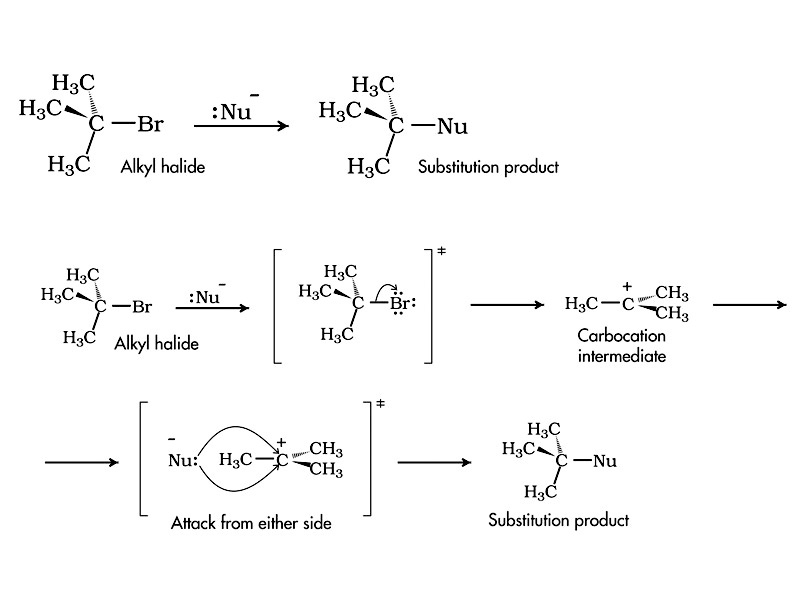Interdisciplinary Note (2 of 29)
The substitution and elimination reactions (SN1 substitution, SN2 substitution, E1 elimination and E2 elimination) are classics of the first semester of organic chemistry and definitely important for the MCAT. In the AAMC outline, SN1 and SN2 are mentioned in the context of alcohols, which can be substrates for these reactions as long as the hydroxyl group is activated by acid catalysis or chemical modification so that it can serve as a leaving group. You definitely need to know SN1 and SN2 backwards and forwards before the test.
E1 and E2 elimination do not appear on the MCAT outline. However, there is enough evidence from other AAMC materials to conclude that familiarity with the E1 and E2 mechanisms is a figure of merit for the test.
One important aspect to keep in mind in organic class is that because carbocation intermediates occur in both E1 elimination and SN1 substitution, rearrangements are possible in these mechanisms. However, rearrangement is not a process you will see in an enzyme catalyzed reaction. The most important filter for the organic chemistry on the new MCAT is its importance in biochemistry. Rearrangement will not occur for SN2 substitution and E2 elimination.
